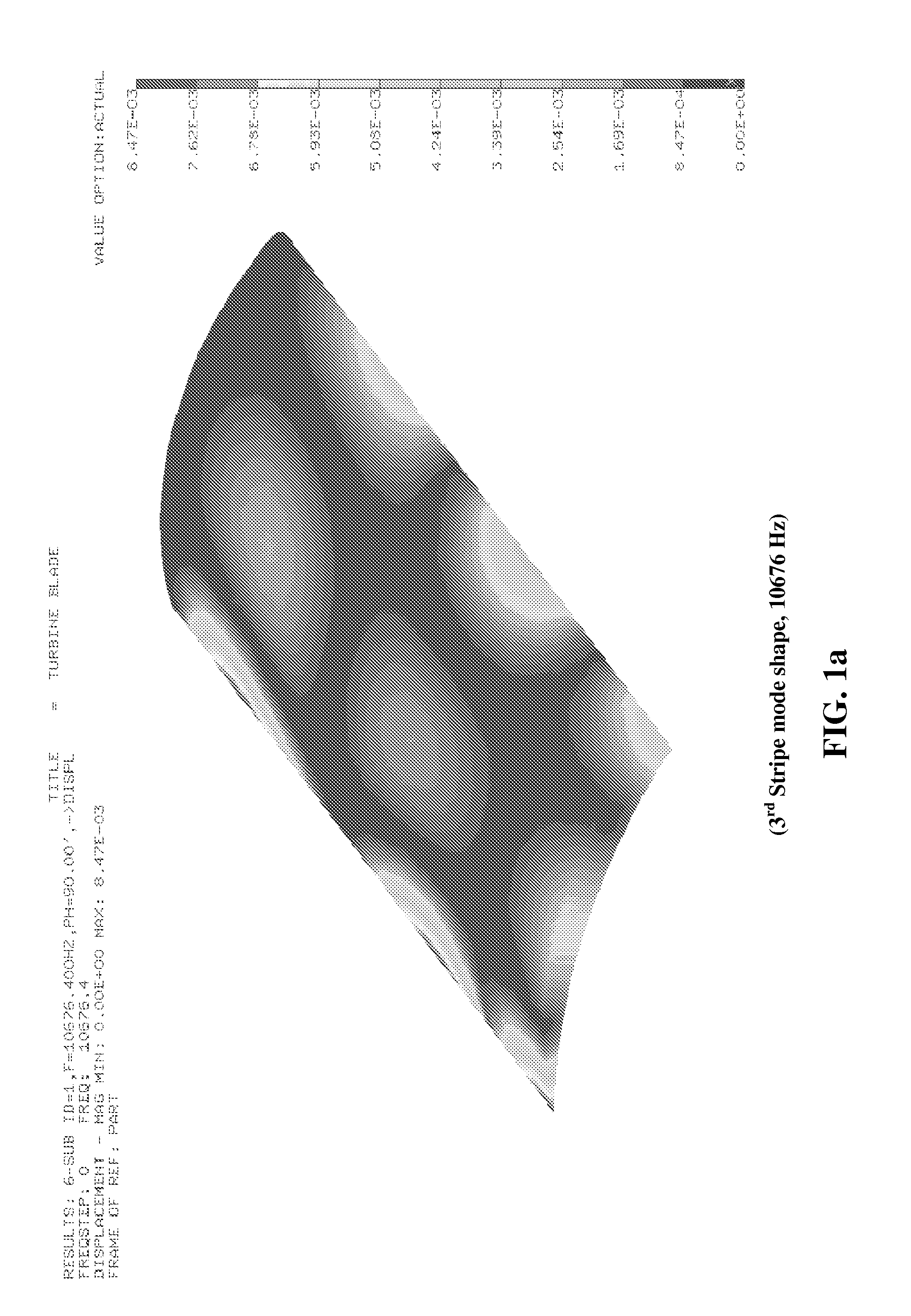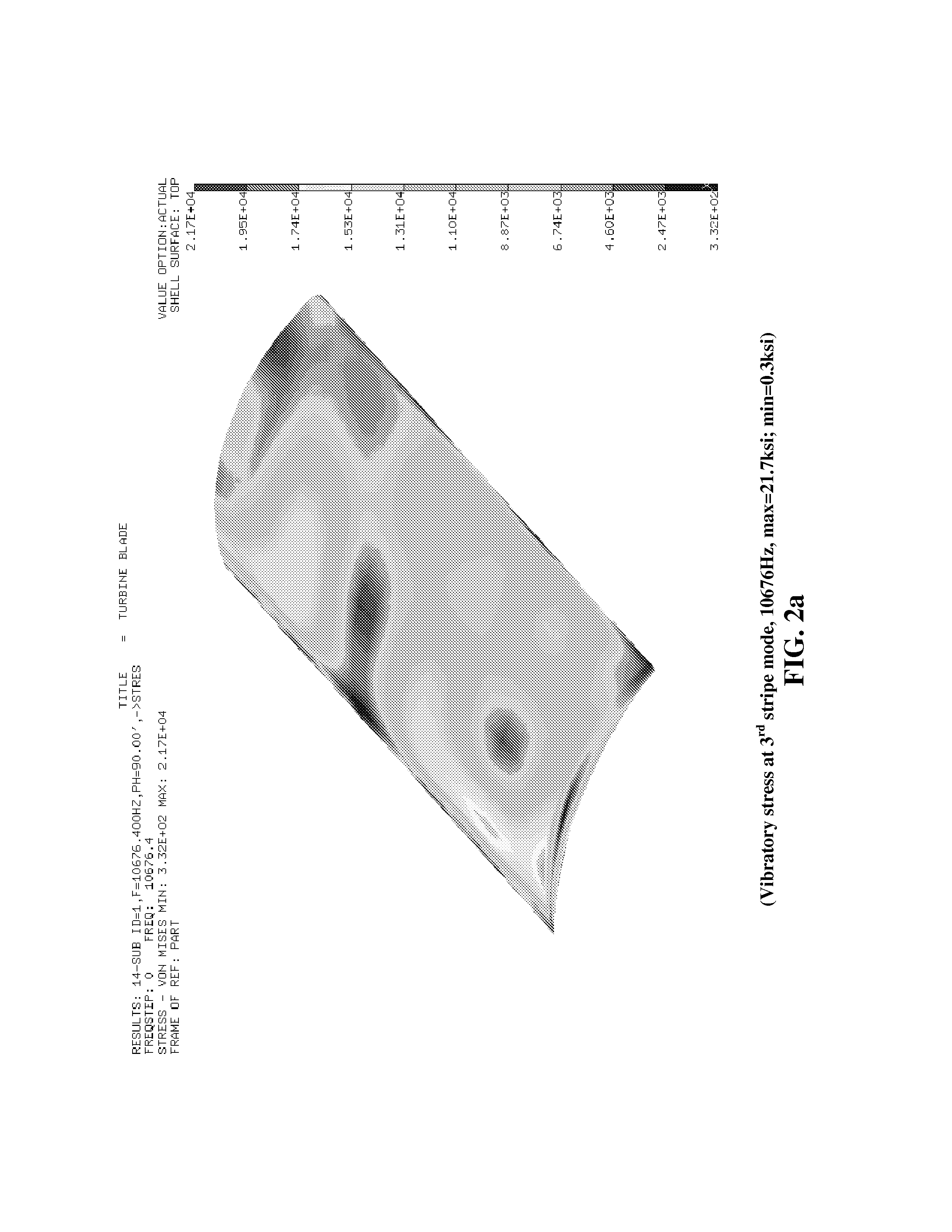Free layer blade damper by magneto-mechanical materials
a magnetomechanical material and damper technology, applied in the field of protective coatings, can solve the problems of causing a significant amount of magnetomechanical hysteresis energy loss, achieve maximum damping capability and resistance, not to dilute aerodynamic efficiency and fatigue strength, and achieve higher magnetic field strength
- Summary
- Abstract
- Description
- Claims
- Application Information
AI Technical Summary
Benefits of technology
Problems solved by technology
Method used
Image
Examples
example no.1
EXAMPLE NO. 1
Two Small Gas Turbine Engine Compressor Blades, Uncoated & Coated, Coating Thickness: 0.002 Inch
[0051]In order to verify that the technology can be implemented to real world applications, the inventor further extended experimentation to real aircraft engine blades (two compressor blades). The inventor simply coated a very thin layer (only 0.002 inch) of the coating to one of the two blades and evaluated the performance of the coating on stress reduction and damping enhancement by using the 18,000 lb. dynamic shaker system. The results shown in FIG. 5, as expected, similar to the coated beam cases, show that the vibratory stress of the coated blade (with 0.002 inch coating layer) was reduced by half (50% reduction) and its damping capability was doubled (100% improvement) in the second mode (natural frequency ˜2,000 Hz). Very promising results, as shown in FIGS. 6-8, were also achieved from the high order modes (natural frequencies around ˜5,000 Hz, ˜8,000 Hz, and ˜20,00...
example no.2
EXAMPLE NO. 2
Two Large Gas Turbine Engine Compressor Blades, Uncoated & Coated, Coating Thickness: 0.003 Inch
[0052]The above successful results have been confirmed and demonstrated on a larger compressor blade from a jet fighter engine. A series of tests were conducted on the coated blades plasma sprayed with a thin coating layer: 0.003 inch thick coating layer and subjected to high accelerations (high “g”), the ones would expect under real-world operating conditions. Using the testing procedure described above, the dynamic responses (frequency, damping, and vibratory strain) of the coated blades have been accomplished using the 18,000 lb. dynamic shaker and the Piezo shaker systems. In order to characterize and identify the damping properties of the blades, approximately 100 test runs were conducted on coated and uncoated compressor blades at various accelerations (“g” levels). These test results of a lower order mode (2nd bending mode), as shown in FIG. 9, and one high order mode ...
PUM
| Property | Measurement | Unit |
|---|---|---|
| weight percent | aaaaa | aaaaa |
| weight percent | aaaaa | aaaaa |
| Young's modulus | aaaaa | aaaaa |
Abstract
Description
Claims
Application Information
 Login to View More
Login to View More - R&D
- Intellectual Property
- Life Sciences
- Materials
- Tech Scout
- Unparalleled Data Quality
- Higher Quality Content
- 60% Fewer Hallucinations
Browse by: Latest US Patents, China's latest patents, Technical Efficacy Thesaurus, Application Domain, Technology Topic, Popular Technical Reports.
© 2025 PatSnap. All rights reserved.Legal|Privacy policy|Modern Slavery Act Transparency Statement|Sitemap|About US| Contact US: help@patsnap.com



